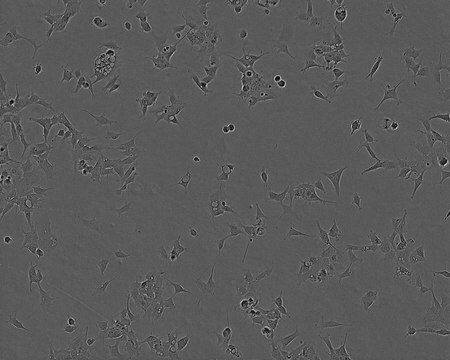176905
Anthrax Protective Antigen
from Recombinant, >90% (SDS-PAGE), lyophilized, anthrax protective antigen, Calbiochem®
Synonim(y):
Wąglik PA
About This Item
Polecane produkty
Nazwa produktu
Antygen ochronny wąglika, Bacillus anthracis, rekombinowany, B. anthracis, Anthrax Protective Antigen, Bacillus anthracis, Recombinant, is the protective antigen that mediates the entry of anthrax lethal factor and edema factor into the target cell.
Poziom jakości
Formularz
lyophilized
producent / nazwa handlowa
Calbiochem®
warunki przechowywania
OK to freeze
Warunki transportu
ambient
temp. przechowywania
2-8°C
Opis ogólny
Działania biochem./fizjol.
Type I membrane protein with a von Willebrand factor A domain called anthrax toxin receptor
Opakowanie
Ostrzeżenie
Postać fizyczna
Rekonstytucja
Komentarz do analizy
Inne uwagi
Nassi, S., et al. 2002. Biochemistry41, 1445.
Ahuja, N., et al. 2001. Biochem. Biophys. Res. Commun.286, 6.
Bradley, K.A., et al. 2001. Nature414, 225.
Brossier, F., and Mock, M. 2001. Toxicon39, 1747.
Informacje prawne
Kod klasy składowania
11 - Combustible Solids
Klasa zagrożenia wodnego (WGK)
WGK 1
Temperatura zapłonu (°F)
Not applicable
Temperatura zapłonu (°C)
Not applicable
Certyfikaty analizy (CoA)
Poszukaj Certyfikaty analizy (CoA), wpisując numer partii/serii produktów. Numery serii i partii można znaleźć na etykiecie produktu po słowach „seria” lub „partia”.
Masz już ten produkt?
Dokumenty związane z niedawno zakupionymi produktami zostały zamieszczone w Bibliotece dokumentów.
Nasz zespół naukowców ma doświadczenie we wszystkich obszarach badań, w tym w naukach przyrodniczych, materiałoznawstwie, syntezie chemicznej, chromatografii, analityce i wielu innych dziedzinach.
Skontaktuj się z zespołem ds. pomocy technicznej








